Upgrading the SSD in Chromebook & MyDigitalSSD Super Boot Drive M.2 2242 SSD Review
by Kristian Vättö on October 21, 2014 8:00 AM ESTThe Upgrade
Upgrading the storage in the Acer C720 Chromebook is surprisingly easy. While Chrome OS does not give the user full system access, there is an integrated (albeit hidden) tool for creating recovery media that can be used to clone the old drive. To open the tool, all you need to do is to open Chrome (i.e. the web browser) and type "chrome://imageburner" to the address bar. Once you have done that, you should see the following:
To create the recovery media, you need either a USB drive or an SD card (minimum 4GB). The tool will not just clone your existing drive but will in fact download the OS again, which in my case was a 498MB download. The downloaded file is then extracted to the USB drive to create the bootable recovery media.
Alternatively, you can also create the recovery media using another computer. Google offers a tool for both Windows and OS X, which can be found here along with the instructions. I tried this as well on my Mac Pro and did not encounter any issues.
After successfully creating the recovery media, you can begin the actual upgrade, which starts by removing the 13 screws on the bottom of the laptop.
Note that at least in the case of the Acer C720, the warranty is (in theory) void if you remove the back cover. That is unfortunate, but on the other hand Chromebooks have not been designed to be user upgradeable.
This is what the internals of the C720 look like. The SSD is located on the right-hand side right above the speaker, so upgrading it does not involve any further disassembly.
The C720 ships with a 16GB Kingston SSD that is held in place by a single screw. Simply remove the screw and the SSD will come out of its socket.
The Kingston SSD is also Phison S9 based and has a single 16GB NAND package with Kingston markings on it. I apologize for the unclear package markings – the label left residue on the packages, which made the markings practically invisible. Anyway, Kingston has not published any NAND data sheets so the markings would not give us many details in the first place. I would make an educated guess that the NAND package has two 64Gbit dies in it from either Micron or Toshiba.
Installing the new SSD is as easy as removing the old one and the assembly process also follows the same instructions as the disassembly, just in the opposite order.
With the new SSD installed, you need to boot with the USB drive or SD card attached for the recovery process to start. Otherwise you will be presented a message that says no OS found and asks you to insert the recovery media or create one using another computer.
The recovery process itself only takes about 15 minutes, so the whole upgrade process should take around half an hour or so. Once the recovery process is complete, the system will be ready for use. The nice thing about Chrome OS is that because it is cloud based, signing in to your Google account will basically restore all settings that you had in place previously, so you can continue from where you were before the upgrade.


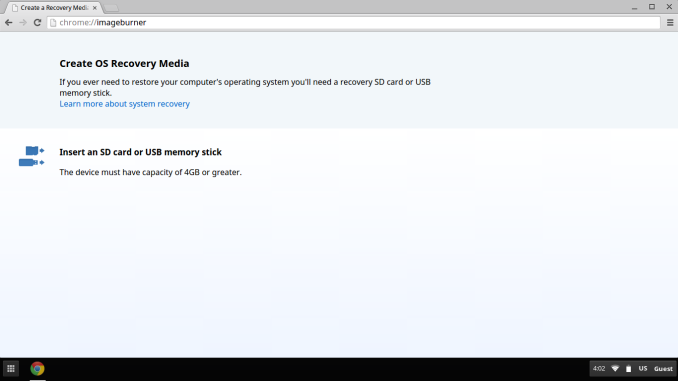

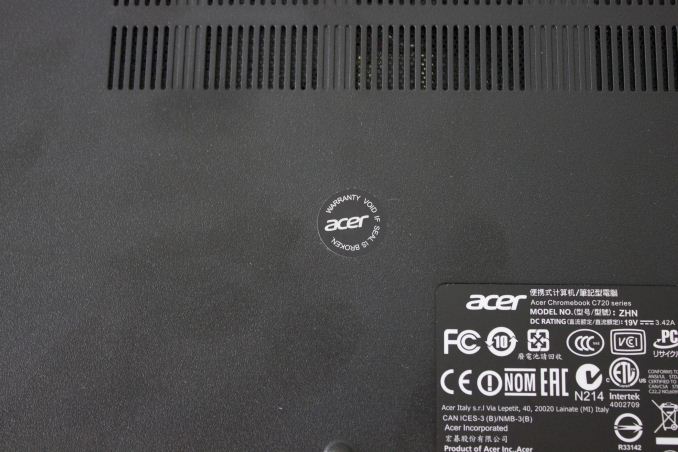
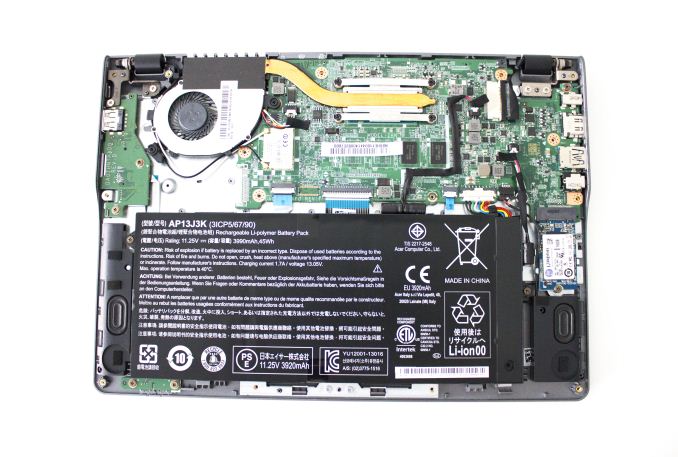
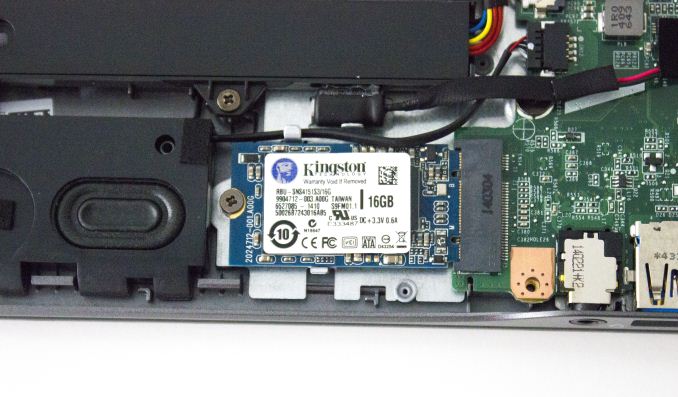
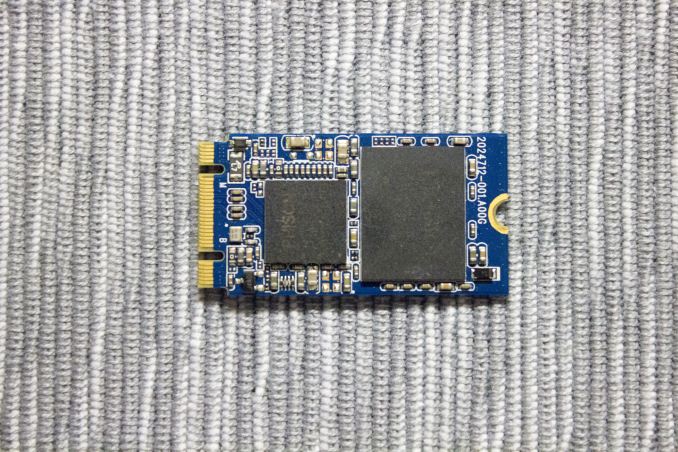
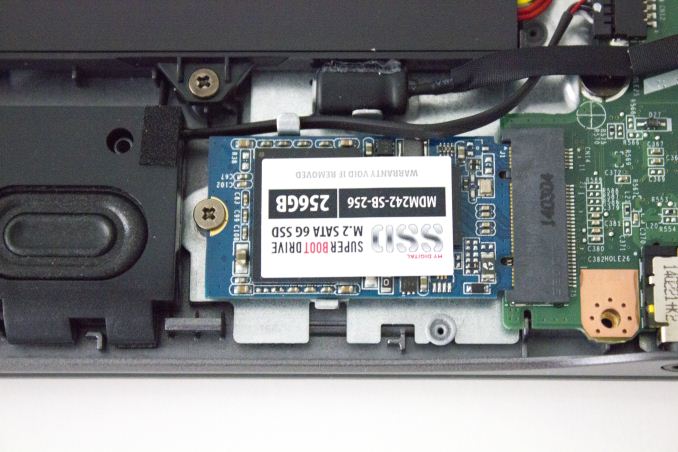








67 Comments
View All Comments
sligett - Wednesday, October 22, 2014 - link
But one might instead say --I have zero clue why Windows laptops are so popular. I tried one and it was laughably complex compared to Chromebooks that are now pretty much priced the same. This might be ok, but for its complexity, Windows doesn't really run any faster than its Chrome OS counterparts, nor does it get much better battery life at all. I just see no reason unless you just absolutely detest ChromeOS.
BrokenCrayons - Tuesday, October 28, 2014 - link
I think one of the root causes for Chrome OS drawing ire is Google's invasive data mining activities associated with the device, storage of information on their servers, and the linking of that data with web browsing habits (including sites that use Google Ad Services -- of which there are many), GPS and cellular triangulation information (if you also happen to be using Android), mail, app use, time spent in each app, and so forth. Google being behind Chrome is one of the biggest problems with uptake of the platform. Since most of Google's services are offered free of charge, you can be assured that they're generating profit by "farming" their users in the same way social networking does, by monitoring and analysing everything at all times on as many platforms as possible.patel21 - Wednesday, October 22, 2014 - link
If we can create a recovery media, then can we install it on normal PC's ?Bob Todd - Wednesday, October 22, 2014 - link
If you just want to play around and test it, you can just grab a Chromium OS build from various places.daddacool - Wednesday, October 22, 2014 - link
"While the whole netbook boom kind of died with the introduction of tablets"I remember the actual reason for the demise of netbooks being feature creep, obviously coupled with the associated price creep. Netbooks we're orginally known as SCCs; Small Cheap Computers. Once the price began edging up into budget laptop price, the case for them became much less compelling.
waldojim42 - Thursday, October 23, 2014 - link
Yep, I thought this too. I remember netbooks reaching into the $400~$500 range while still running crap Atom processors. I don't know who they expected would be in the market for them, but it sure wasn't me.a1exh - Wednesday, October 22, 2014 - link
How well does the "chrome://imageburner" upgrade method work? If your internal 16/32GB drive is almost full (of non-compressible data) presumably you need a 16/32GB SDHC or USB stick?extide - Friday, October 24, 2014 - link
It doesnt back up your daownloaded data, just the OS.abianand - Thursday, October 23, 2014 - link
Does this SSD upgrade keep the cost of this Chromebook at $200 or increase it?Suo.Eno - Thursday, October 23, 2014 - link
Here you go brohttp://www.anandtech.com/show/8543/upgrading-the-s...